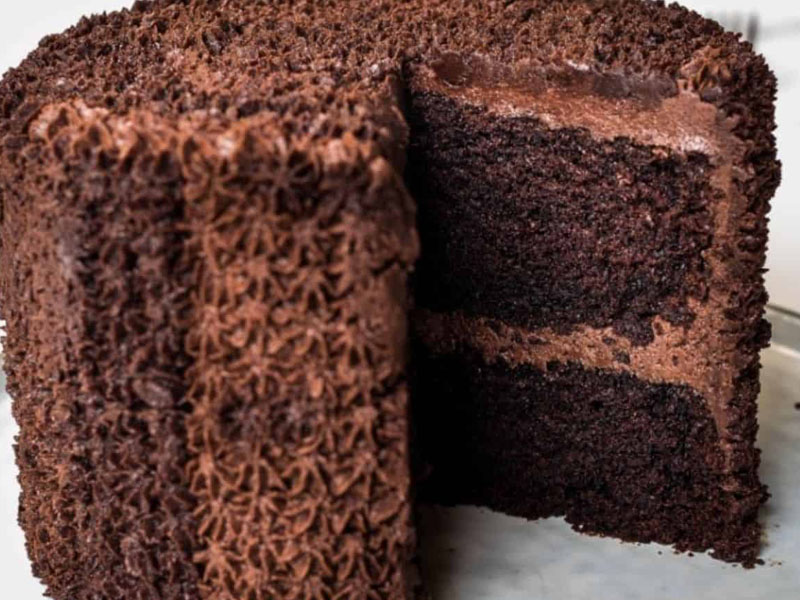Stand there in an open-mouthed wonder at the sheer beauty of an eggless cake by learning about the important ingredients that go into its making.
Flour Improver
To improve the processing and baking quality of an eggless cake recipe, some functional ingredients termed ‘flour improvers’ are combined with flour. There are different kinds of dough conditioners, dough improvers and bread improvers available in the market.
Some of the functions achieved by these functional ingredients in an eggless cake recipe are to increase the speed of dough rising, to improve the strength and workability of the dough, etc.
There are wide ranges of these functional agents, also known as flour improver, available that are used in bakery processing. These can be grouped as:
1) Bleaching Agents
Freshly milled flour is yellowish in colour due to the presence of the xanthophyll pigment.
- In some baked products like white bread white coloured flour is desirable.
- When the flour is exposed to the air, bleaching of the freshly milled flour can be achieved naturally by oxidation. This, however, is not feasible for the flour under bulk storage.
- The flour is treated with some bleaching agents to accelerate the process of bleaching.
- Benzoyl peroxide, which brings out the change within two days, is the most common bleaching agent used in all-purpose flour or maida and bread.
- Bleaching agents do not have any adverse effects on the baking quality of wheat flour.
- Chlorine is used as a bleaching agent in the case of cake flour. However, the same is detrimental to bread flour.
With Hunar Online, learn how to make an eggless cake.
2) Maturing Agents:
Exposure of flour to the air for a longer period of time, as in natural ageing causes strengthening of the gluten that forms from flour and also, whitening of the flour.
Functions of maturing agents:
- It oxidises the carotenoid pigments in flour, whitening them and changing their chemical structure.
- It oxidises the gluten forming proteins, allowing them to form stronger glutens.
Disadvantages of maturing agents
- Storage problems are caused due to longer time requirements, often several weeks or months.
- Mould growth or infestation with insects or rodents can happen due to a longer time duration.
- It is not a very consistent and effective method of flour ageing.

Image Source: Decorated Treats
With Hunar Online, learn how to make an eggless chocolate cake.
- To accelerate the ageing of freshly milled flour, a number of oxidising agents are used as maturing agents. To ultimately help form disulphide bridges between the gluten molecules, these agents primarily affect sulphur-containing amino acids. Increased gluten strength results in a larger, more uniform finished baked product.
Maturing Agents may or may not act as bleaching agents. The common oxidising agents’ are-
Various flour bleaching agents
- Azodicarbonamide
- Carbamide
- Potassium Bromate
- Ascorbic acid
- Phosphates
- Malted barley
- Potassium iodate
- Reducing Agents:
To weaken the flour in an eggless cake recipe, reducing agents break the protein network which helps in handling a strong dough.
The advantages of reducing agents are
- Increased extensibility
- Reduced dough elasticity
- Shortened mixing
- Improved machinability
- Proofing time
The common reducing agents are-
- L-cysteine
- Sodium bisulphate
- Fumaric acid
- Non-leavening yeast
- Ascorbic acid
With Hunar Online, learn how to make an eggless cake at home.
- Enzymes:
- Enzymes help make reactions take place that otherwise would not or speeds up reactions in dough by acting as a natural catalyst.
- They include concentrated microbial enzymes in the form of powder, tablet or liquid and enzymes present in the form of malt syrup or flour.
- A natural source of amylase is malt and amylases help to break down the starch in flours into simple sugars, which further is used as a yeast food, browning of product, softening and slowing staling of the product.
- By degrading some of the gluten, proteases improve the extensibility of the dough.
- Emulsifiers:
- These include a variety of amphiphilic chemicals that are soluble at low concentrations in both oils and water and also include natural lecithin.
- By interacting with gluten, some of these improve finished product volume and strengthen the dough. Others improve the shelf life by complexing with the amylose starch in the flour to keep it from becoming firm after baking. They also help soften the crumb in an eggless cake recipe.
- To achieve both strengthening and softening effects, emulsifiers can be used both individually and in combinations.
Water:
- Water is not only essential for the survival of human beings but it also plays the role of a crucial ingredient in making an eggless cake recipe. Water can be added to the formulation either in its pure form or in the form of liquids like milk, etc.
- Hardness and pH of the water are important considerations when it comes to baking purposes and hence water should have compliance as follows-
- The medium hardness of the water should be in the range of 50-100 ppm.
- The pH of the water should be neutral but even a slightly acidic pH is acceptable.
Water that is too soft makes the dough sticky and water that is too hard toughens the gluten and retards the fermentation process thereby, adversely affecting the final baked product. Hence, hardness greatly affects the dough quality.

source: everyday health
Functions – Gluten Formation
- Only when the glutenin and gliadin protein interact with each other in the presence of water during dough making, gluten is formed.
- To assist in dough temperature, water is needed.
- For proper gelatinization during baking, water is required for hydration and swelling of starch.
- Water is also a requisite for hydration and the uniform distribution of salts and non-flour ingredients.
- It acts as a medium for enzyme activity in an eggless cake recipe.
- Water contributes moistness to the baked products and improves their mouthfeel.
- Water acts as a natural leavening as the presence of it in the dough turns to steam during baking, which causes the product to expand and hence contributes to the tenderness and volume of the baked product.
Set a quiet reminder for your baking skills by learning to bake an eggless cake. With the help of the above-mentioned details, you now know the right ingredients to make an eggless cake.
Also Read: What are the Best Ways to Decorate Cakes after Baking?
At Hunar Online, you will get access to detailed video lessons and can learn from anywhere. You will get 24/7 faculty support and a chance to learn from the experts in the industry. You can also watch our trial classes and get a glimpse of our courses. You can start learning your favourite course by downloading the app.
So, what are you waiting for? Join Hunar Online Courses and do what you always wanted to do.



